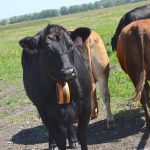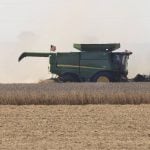Scientists have adapted acoustic techniques commonly used by engineers to predict mechanical failures to detect insects hidden in soil and the interior of plants.
United States Department of Agriculture researchers from Florida and Oregon and colleagues at Auburn University, University of Florida and Montana State University have developed an acoustic technique that uses sensitive instruments like accelerometers, soil-probe electret microphones and piezoelectric disks to pinpoint insect locations. These sensors convert vibrations into electrical signals.
Insect pests are hard to detect because they often live in plants and soil. Field searches often include a visual inspection followed by digging, removal of the root mass or flushing with water, all of which damage the plant.
Read Also

Why feds imposed EV tariffs
Moe and Kinew have a fight on their hands when it comes to eliminating the EV tariff. Canada has to worry about pissing off the U.S. and Mexico and hundreds of thousands of auto workers.
Researchers have been trying to find a less destructive way of determining insect infestations.
They conducted tests using a variety of insects and soil conditions in Florida, Oregon and Puerto Rico. The insects, such as wheat stem sawfly and weevils that attack the roots of orange trees and ornamental plants, were chosen for their economic importance and variations in size.
The portable acoustic sensors were found to detect insects within three minutes over distances of 10-30 centimetres, depending on the composition of the soil and peak frequencies of the sound pulses.
The sound pulses were then averaged to create profiles for each insect.
Acoustic profiles were also developed for background noises such as wind, airplanes and motor vehicles that often interfere with accurately determining the presence of insects.
The insect profiles were used in tests that compared acoustically predicted infestations with insects found in the soil.
Insects within 30 cm were detected 100 percent of the time under laboratory or ideal field conditions where low-frequency background noise levels were low. The technique was 75 percent reliable under adverse conditions in the field.
This inexpensive and nondestructive pest-monitoring method may prove useful to growers who want to use integrated pest management systems to lessen the impact of a variety of insect pests on farm productivity.














